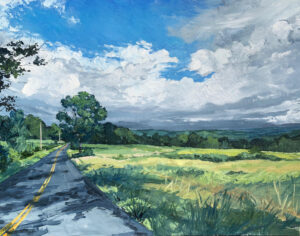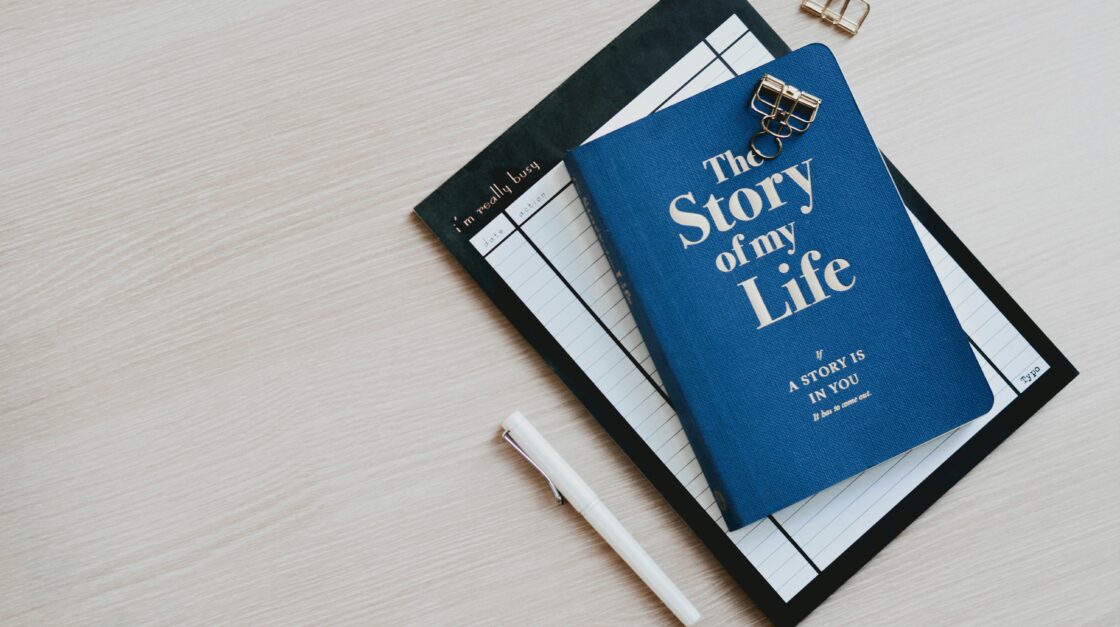Writing a book about your life is an intense experience. As you learn how to write your life story, you’ll also be confronting uncomfortable truths about yourself, possibly learning new facts about your life or your family, and doing the challenging work of pulling back the proverbial rug on the unspoken agreements, family secrets, and apocryphal stories that have been swept under it.
Lest this all sound like a warning, take heart: learning how to write a book about your life is also a profound act of intimacy with yourself. It will teach you who you are. At times the process will ask more of you than you have, in terms of honesty, perseverance, communication, and acceptance. You will grow to meet those demands. Your life will expand from that growth.
Writing a book about your life is a profound act of intimacy with yourself.
Writing your autobiographical nonfiction book—whether you choose to write a memoir or an autobiography; see below—will be deeply fulfilling, and also very hard. To keep going during the hard spots, it is crucial to have a clear sense of why you are undertaking such a project. We’ll unpack how to “find your why,” and then we’ll get into the steps that come after, thinking at once about the nuts-and-bolts processes of how to build your memoir, the success of the project itself, and your mental health and mindset as you create it.
How To Write a Book About Your Life: Contents
How to Write a Book About Your Life
Writing a book is a long and complex process, and, if this is your first time, you’ll likely need to learn new skills and build new capacities along the way. Some of these skills and capacities are practical craft elements (like writing nuanced characters) and questions (like using the present vs the past tense), while others are more abstract and ask you to dig deep into your creative and psychological background.
It’s always worth remembering that learning how to write the story of your life is challenging—and that a sense of overwhelm or confusion is very normal, even for experienced writers. Starting with the foundational question of why you want to learn how to write a book about your life, we’ll unpack the major steps in the process of writing your memoir.
1. How To Write a Book About Your Life: Identify Your Why
In his book Start With Why, author and leadership coach Simon Sinek offers a simple framework for understanding exactly what inspires, motivates, and drives a person or organization. He calls this idea “The Golden Circle,” and it is represented by a circle with “why” in the center, “how” in the middle ring, and “what” in the outer ring.
As you consider how to write the story of your life, think carefully about your why. Your “what” is your completed memoir, and your “how” is all the steps we’re about to delve into. But only you can articulate your why. For many writers, particularly life writers, the “why” has something to do with legacy and truth telling. Spend some time writing in a stream-of-consciousness style, talking to your trusted people, and thinking deeply about your why. With it, you can weather a lot of challenge in the creative process. Without it, it can be difficult to maintain the perseverance and faith that it takes to write a book about your life
2. How To Write a Book About Your Life: Articulate the Scope of Your Project
To begin learning how to write your life story, the first step is to decide what goes in, and what does not. Unlike autobiography, which chronologically tracks a life from birth onward, a memoir has a specific focus—also known as its scope.
Memoir is an increasingly popular literary form, autobiography less so, so through most of this article we will discuss memoir. Learn more about the differences between memoir and autobiography—and choose the form right for you—here:
Memoir Vs Autobiography Vs Biography: The Craft of Nonfiction Books
Often, memoirs are scoped by particular time periods, which may be marked or defined by a job or career (Ted Conover’s Newjack, Melissa Febos’s Whip Smart), a relationship (Leslie Jamison’s Splinters, Kelly McMasters’ The Leaving Season), or a time-bound experience like early parenthood (Sarah Hoover’s The Motherload).
Other memoirs have thematic or conceptual scopes (Emily Maloney’s Cost of Living, Lilly Dancyger’s First Love).
Your scope does not need to be perfectly defined or set in stone to begin writing, but you do need to establish at least a tentative scope. Think about where the story you want to tell starts and where it ends. Crucially, this may not be the same thing as where the lived experience starts and ends—think about, say, education. Your education probably started in nursery school and perhaps extended to graduate school, but to write a memoir about your undergrad experience, you’ll want to start well after nursery school and end before grad school.
Article continues below…
Memoir Writing Courses We Think You'll Love
We've hand-picked these courses to help you flourish as a writer.

Write Your Memoir in 16 Weeks: Bring Your Story to Life
Write your memoir in 4 months. Discover the heart of your story, and submit up to 3,000 words each week...
Find Out More
Writing the Memoir-in-Essays: 8-Week Workshop
Discover the rich hybrid form of the memoir-in-essays, and write full essays as you move toward a completed manuscript.
Find Out More
The Stories of Your Life: Personal Essays and Creative Nonfiction
Discover the unique power of the personal essay to explore your life experience, and come away with a wealth of...
Find Out MoreOr click below to view all courses.
See CoursesArticle continues…
3. How To Write a Book About Your Life: Research Craft Approaches
One of the first steps in learning how to write the story of your life is researching and considering the craft approach you want to take in your manuscript. Genre is a huge question here: when you think about how to write a book about your life, do you see it as a nonfiction project, or a fiction/autofiction project? And once you’ve decided on that, what do you think or know about how the book will be shaped and structured?
There are as many craft approaches as there are books on the Barnes & Noble shelves. Do you want to present your narrative to your reader in sections or chapters? Or do you want the read to be straight through without segmentation? Are there multimodal approaches like poetics or images that you want to incorporate? Will you write in the first person point of view? Third? Second? Will your book be narrated in present tense? Past? A hybrid?
As you’re making these choices, it is a great time to read widely, in and out of your typical genre and style. Read as a writer, noticing the craft choices the writer is making and how they land for you.
4. How To Write a Book About Your Life: Decide on An Approach
Once you’ve immersed yourself in all things craft and your head is swimming with literary terms, you’re in a great place to make some initial decisions about the craft approach you want to take in your manuscript. You can always make changes down the line, so it’s less about making a perfect choice and more about making any choice that allows you to get started. Because the work we do as writers is, in the thought phase, abstract and individual, it can be very useful to export our mental processes and decisions to an actual piece of paper.
Here are some questions that are useful to develop answers for as you learn how to write your life story:
- What genre are you writing in? (nonfiction/fiction/autofiction/poetics)
- Within that genre, what niche are you working in?
- For example, if you’re writing nonfiction, you may be writing memoir, essay, autobiography, etc. If you’re writing fiction, you may be writing a novel, short stories, a novella, etc.
- Where does the scope of the story start on the page?
- Where does the scope of the story end on the page?
- How will the manuscript be structured?
- About how long do you want it to be?
- Who are the major characters?
- What are the major events?
- What are the major themes?
Once you can answer all or most of those questions (even if your answers change as you work), you’re ready to start the process of learning first-hand how to write the story of your life
5. How To Write a Book About Your Life: Gather Resources and Support
Depending on your experience level as a writer and your preference, you may need a lot of support with your literary craft, or not. That support can come in the form of classes, creative coaching, editing, mentorship, academic study, craft books, model texts, and creative partnerships. Let’s look at each of these resources and think about how to use them as you navigate how to write your life story.
Creative Writing Classes
Classes in creative writing craft, artistic process, and publication strategy can be invaluable to writers of all experience levels. Depending on the mode and style of the course, you can find group and 1:1 feedback, thought partnership, accountability, deadlines, and solidarity.
Coaching
Creative coaching is a tremendous and underutilized service for writers. Coaches vary widely in their approaches, but any good creative writing coach will work with you on your craft, process, overall project architecture and timeline, workflow, and the hard-to-define “life stuff” (such as interpersonal relationships, past traumas, and emotions) that will absolutely come up as you are working through how to write the story of your life.
Professional Editing and Mentorship
A professional or peer editor typically works asynchronously on your manuscript. You can access paid or reciprocal editing at any project stage, but shop for an editor carefully—you don’t just need a good editor, you need an editor who is great for you and your project.
Mentorship is where you find it. There are formal mentorship opportunities in academia and through workshops and programs like Periplus Collective, and informal mentorship relationships that you can seek in your creative communities. Some established writers relish mentoring newer writers, others professionalize mentorship and charge for it, and others do not want to mentor. When you meet a writer who you look up to, consider asking them their thoughts and experiences on mentorship—and consider what you might bring to such a relationship.
MFAs and Ph.Ds
The Master of Fine Arts (MFA) and the PhD in Creative Writing degrees are pathways that some writers opt to pursue. They are rigorous, time consuming, and often expensive, but they can also provide an incredible concentration of resources to radically expand your skills and body of work.
Craft Books
For a relatively minor investment, you can learn directly from some of the most illustrious working writers out there. John McPhee, Rick Rubin, Melissa Febos, Vivian Gornick, Ted Conover, Lee Gutkind, and many other celebrated writers have authored craft books that describe elements of their own writing processes.
Model Texts
A model text is simply a book that you read with an eye to how you might use elements of its craft in your own work. For example, if you read William Finnegan’s Pulitzer-winning memoir Barbarian Days, you might notice how he uses reporting within the narrative of his memoir. If you like it, you might try that in your own material. It’s worth noting that aspects you don’t like in any given text can be hugely instructive to your own work. Once you’re a writer, there really is no useless reading!
Creative Partnerships
Creative partnerships are friendships, collegial relationships, and collaborations with other writers and artists that include space for you to dialogue about your work and creative processes. Many times, a conversation can allow for different modes of thinking, which can offer reflection, inspiration, accountability, and can mitigate some of the loneliness of writing a book.
6. How To Write a Book About Your Life: Draft Your Manuscript
One of the least and most useful pieces of writing advice is “just write.” That call to action is often useless because, well, if you could, you already would be! But, viewed another way, it is the best and most useful note out there, because all the thinking, planning, researching, perseverating, and avoiding will never lead to a written book. Only writing will lead to a written book. That said, the advice works better with a little explanation: In the early phases of writing your book (and at any point when you feel stuck or unsure how to proceed), do two things:
- Remove the standard for quality. That’s right—remove it. You are allowed to write messy, illegible, objectively bad pages. And not only are you allowed to write bad, messy pages—you should celebrate writing them. Ann Lamott’s famous writing advice (from her craft book Bird By Bird) is to write a “shitty first draft.” No truer words on craft have been written. We all need permission to work something out in real time, and the expectation of perfection, or even legibility, on the first pass, is both unreasonable and ultimately self-defeating. So, “just write”—but do so with the freedom of a small child learning to finger paint. You have lots of time to make it beautiful later in the process.
- Articulate a formal writing goal and stick to it. This goal must be modest to be effective. It should ask of you about 40% of what you perceive as your capacity. You can measure your progress by word count (“I’ll write 300 words every day”), sessions (“I’ll sit down to write on Mondays, Wednesdays, and Fridays”), or time (“I’ll set a timer and write for 30 minutes on 5 days this week).
This is how you draft your book. Learn more about setting goals for yourself here:
7. How To Write a Book About Your Life: Take Care of Yourself
When you’re learning how to write the story of your life, it is important to remember that you are not a machine that makes words—you are a human person having a lived experience. Almost universally, writing about your life stirs up past hurts, trauma responses, and uncomfortable or embarrassing experiences. To write a good and honest book about your life, you’ll need to take a hard look at your own role in the experiences you’ve had, which is is a difficult and psychologically uncomfortable thing to do.
As you undertake the project of writing your memoir, consider what social, emotional, and lifestyle support you need. This can be simple, like making sure you’re eating nourishing food and drinking enough water. This can also be complex and involved, like entering therapy or engaging with a spiritual practice. Think about what buoys you during difficult times, and seek those supports for your creative process.
8. How To Write a Book About Your Life: Edit Your Manuscript
Once your book is drafted, you are at something of a crossroads. Every book needs rigorous editing. Will you take that on yourself, or work with an outside editor? Consider your skill set, your budget, and your desires for the book. If you want to self-publish a manuscript for your close friends and family, self-editing may be perfectly sufficient. If you are a debut writer seeking traditional publication with a Big 5 publisher, it’s worth considering bringing a more seasoned editor on board to help you get the manuscript in its best, most polished state.
Take an Online Creative Nonfiction Writing Course with Writers.com
If you want to learn how to write the story of your life, you’ve come to the right place. Join a trusted mentor and a crew of fellow Writers.com writers to delve into craft questions, work in accountability with others, and figure out how to write your life story without breaking yourself. Will this be your year to write your story? Take a look at our upcoming nonfiction classes!

